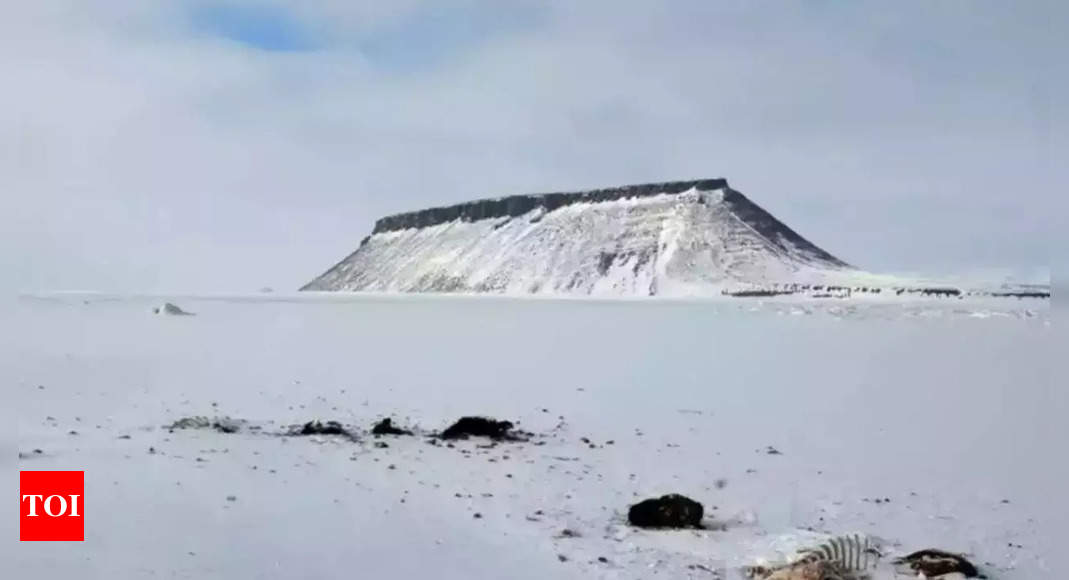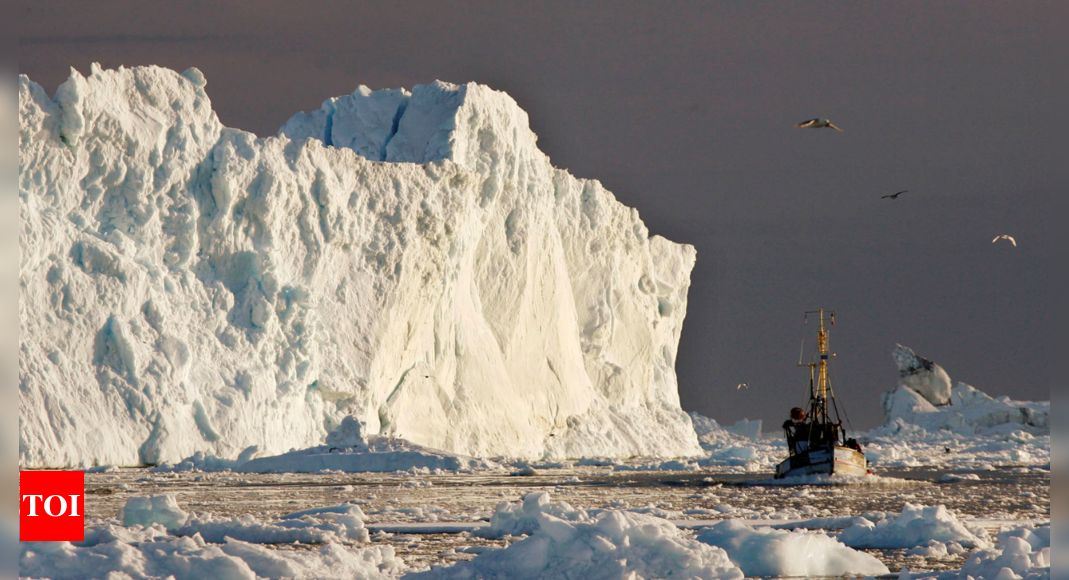
A team of NASA scientists made a remarkable discovery while surveying the Greenland Ice Sheet in April 2024. During their attempt to map the ice, they stumbled upon something entirely unexpected—Camp Century, an abandoned U.S. military base buried beneath the ice. The discovery, which occurred as part of a routine survey, marked an unprecedented look into Cold War history. Alex Gardner, a cryospheric scientist at NASA’s Jet Propulsion Laboratory (JPL), who was part of the team, described the moment: “We were looking for the bed of the ice and out pops Camp Century.” Initially, the scientists were unsure of what they had uncovered, as the site had been buried for decades.
New radar technology unveils hidden structures of Camp Century
This groundbreaking discovery was made possible by the use of advanced radar technology. While previous radar surveys had detected the presence of Camp Century, it was only with the new Uninhabited Aerial Vehicle Synthetic Aperture Radar (UAVSAR) that the base’s individual structures became visible in such clarity. Unlike traditional radar, UAVSAR allowed for a more detailed and accurate imaging of the base. Chad Greene, another scientist involved in the project, noted that “individual structures in the secret city are visible in a way that they’ve never been seen before.” This breakthrough technology revealed a hidden piece of history that had long been lost under the ice.
History of Camp Century
Camp Century was built by the U.S. military in 1959 during the Cold War. Its official purpose was to test construction techniques in the harsh Arctic conditions and conduct scientific research, but it also had a top-secret military agenda. The base was used to explore the feasibility of deploying nuclear missiles from the Arctic, a strategy that was considered a potential advantage during the Cold War arms race.
The base was located deep within the Greenland Ice Sheet, and it operated with a nuclear-powered generator. It housed between 85 and 200 soldiers at any given time. Over the years, Camp Century became a hub for research and testing, and the ice core samples taken from the site are still valuable to climate scientists today. Despite its scientific contributions, the base’s military role remained shrouded in secrecy. In 1967, after the U.S. military abandoned the idea of using the base for nuclear missile launches, Camp Century was decommissioned. The Army Corps of Engineers removed the nuclear reactor, but left behind much of the infrastructure, including various forms of waste.
Environmental risks posed by melting ice at Camp Century
The discovery of Camp Century raises significant environmental concerns, especially in the context of climate change. Scientists are worried that the melting ice sheet covering the base could lead to the release of toxic waste buried beneath the ice. William Colgan, a climate and glacier scientist who co-authored a study on Camp Century, emphasized the potential danger. He explained that climate simulations suggest that as early as 2090, the site could transition from a net snowfall environment to one of net melt. If this happens, the waste that has been safely encased in ice for decades could begin to leak into the atmosphere.
As the ice melts, materials that were once contained could seep out, causing environmental damage. The waste buried at Camp Century includes a dangerous mix of chemicals: 53,000 gallons of diesel fuel, 63,000 gallons of wastewater, and unknown quantities of low-level radioactive coolant from the nuclear reactor. The estimated 136 acres of waste at the site could eventually pose a significant hazard to the local ecosystem and beyond.
Scale of waste buried at Camp Century and its potential impact
The waste at Camp Century is not a small concern. Scientists estimate that the site contains 136 acres of waste buried under approximately 100 feet of ice. This includes not just chemicals like diesel fuel and wastewater but also radioactive materials. The melting ice could bring these toxic substances to the surface, potentially leading to irreversible environmental contamination. If the base is exposed as the ice continues to melt, it would be a major environmental crisis that could affect the surrounding Arctic ecosystem and contribute to broader climate-related problems.
How climate change could release hazardous waste from Camp Century
The discovery of Camp Century under the Greenland Ice Sheet serves as a stark reminder of the long-term consequences of human activity on the environment. The fact that hazardous waste has been buried in the ice for decades—and that it may soon be released due to climate change—highlights the risks of leaving past contamination unresolved. Scientists are concerned that climate change could worsen the situation and lead to the uncontainable spread of pollutants in the coming decades.
This issue also underscores the broader challenges posed by climate change to the Arctic region, where rising temperatures are causing ice sheets to melt at an accelerated pace. The potential release of waste from Camp Century is just one example of how climate change can unearth previously hidden dangers, potentially having far-reaching effects on both the environment and human health.
Camp Century discovery highlights the environmental legacy of past human actions
The discovery of Camp Century beneath the Greenland Ice Sheet not only uncovers a hidden chapter in Cold War history but also raises alarming concerns about the environmental consequences of past human actions. The potential release of toxic waste from the site due to climate change serves as a powerful reminder of the long-lasting impact of human activities on the planet. As the ice melts and reveals what was once buried, scientists and environmental experts must continue to monitor and address these emerging threats. The situation at Camp Century exemplifies the intersection of historical legacy and modern-day climate challenges, underscoring the urgent need for action in combating climate change and mitigating its effects.
Also Read | James Webb Space Telescope captures stunning image of the hat-shaped Sombrero Galaxy







